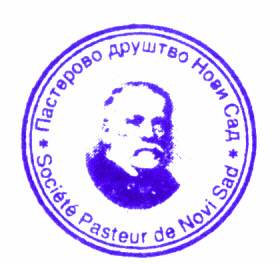md-medicaldata
Main menu:
- Naslovna/Home
- Arhiva/Archive
- Godina 2024, Broj 1
- Godina 2023, Broj 3
- Godina 2023, Broj 1-2
- Godina 2022, Broj 3
- Godina 2022, Broj 1-2
- Godina 2021, Broj 3-4
- Godina 2021, Broj 2
- Godina 2021, Broj 1
- Godina 2020, Broj 4
- Godina 2020, Broj 3
- Godina 2020, Broj 2
- Godina 2020, Broj 1
- Godina 2019, Broj 3
- Godina 2019, Broj 2
- Godina 2019, Broj 1
- Godina 2018, Broj 4
- Godina 2018, Broj 3
- Godina 2018, Broj 2
- Godina 2018, Broj 1
- Godina 2017, Broj 4
- Godina 2017, Broj 3
- Godina 2017, Broj 2
- Godina 2017, Broj 1
- Godina 2016, Broj 4
- Godina 2016, Broj 3
- Godina 2016, Broj 2
- Godina 2016, Broj 1
- Godina 2015, Broj 4
- Godina 2015, Broj 3
- Godina 2015, Broj 2
- Godina 2015, Broj 1
- Godina 2014, Broj 4
- Godina 2014, Broj 3
- Godina 2014, Broj 2
- Godina 2014, Broj 1
- Godina 2013, Broj 4
- Godina 2013, Broj 3
- Godina 2013, Broj 2
- Godina 2013, Broj 1
- Godina 2012, Broj 4
- Godina 2012, Broj 3
- Godina 2012, Broj 2
- Godina 2012, Broj 1
- Godina 2011, Broj 4
- Godina 2011, Broj 3
- Godina 2011, Broj 2
- Godina 2011, Broj 1
- Godina 2010, Broj 4
- Godina 2010, Broj 3
- Godina 2010, Broj 2
- Godina 2010, Broj 1
- Godina 2009, Broj 4
- Godina 2009, Broj 3
- Godina 2009, Broj 2
- Godina 2009, Broj 1
- Supplement
- Galerija/Gallery
- Dešavanja/Events
- Uputstva/Instructions
- Redakcija/Redaction
- Izdavač/Publisher
- Pretplata /Subscriptions
- Saradnja/Cooperation
- Vesti/News
- Kontakt/Contact
 Pasterovo društvo
Pasterovo društvo
- Disclosure of Potential Conflicts of Interest
- WorldMedical Association Declaration of Helsinki Ethical Principles for Medical Research Involving Human Subjects
- Committee on publication Ethics
CIP - Каталогизација у публикацији
Народна библиотека Србије, Београд
61
MD : Medical Data : medicinska revija = medical review / glavni i odgovorni urednik Dušan Lalošević. - Vol. 1, no. 1 (2009)- . - Zemun : Udruženje za kulturu povezivanja Most Art Jugoslavija ; Novi Sad : Pasterovo društvo, 2009- (Beograd : Scripta Internacional). - 30 cm
Dostupno i na: http://www.md-medicaldata.com. - Tri puta godišnje.
ISSN 1821-1585 = MD. Medical Data
COBISS.SR-ID 158558988
DIFFUSE COVID-19-ASSOCIATED LEUKOENCEPHALOPATHY WITH
MICROHEMORRHAGES – OUR EXPERIENCE
/
DIFUZNA LEUKOENCEFALOPATIJA SA MIKROHEMORAGIJAMA POVEZANA SA COVID-19 – NAŠE ISKUSTVO
Authors
Igor Sekulić1,2, Nemanja Rančić1,2,3, Biljana Georgievski Brkić4, Miroslav Mišović1,2, Smiljana Kostić2,5, Jelena Bošković Sekulić6, Dejan Kostić1,2
1Institute of Radiology, Military Medical Academy, Belgrade, Serbia
2University of Defence, Faculty of Medicine of the Military Medical Academy, Belgrade, Serbia
3Centre for Clinical Pharmacology, Military Medical Academy, Belgrade, Serbia
4Special Hospital for Cerebrovascular Diseases „Sveti Sava”, Belgrade, Serbia
5Clinic for Neurology, Military Medical Academy, Belgrade, Serbia
6Clinic of Emergency Medicine, University Clinical Centre Kragujevac, Kragujevac, Serbia
UDK: 616.98-06:578.834 616.8
The paper was received / Rad primljen: 01.03.2023
Accepted / Rad prihvaćen: 21.03.2023.
Correspondence to:
Dejan Kostić,
Institute of Radiology,
Military Medical Academy,
Crnotravska 17, Belgrade, Serbia,
e-mail: drdkostic@gmail.
Abstract
Introduction: Neurological complications related to SARS-CoV-2 are increasingly recognized. In diffuse leukoencephalopathy with microhemorrhages, non-contrast computed tomography (CT) can initially demonstrate extensive, fairly symmetrical hypodense areas in the supratentorial white matter and corpus callosum, while magnetic resonance imaging (MRI) shows diffuse, confluent hyperintensities, scattered microhemorrhages predominantly in subcortical WM and the corpus callosum without diffusion restriction or abnormal enhancement. Case report: Initial imaging evaluation with non-contrast CT of the brain revealed multifocal non-hemorrhagic white matter lesions in both cerebral hemispheres and cerebellum. A contrast-enhanced brain MRI showed non-enhanced diffuse, bilateral, symmetric, confluent hyperintensities located in the deep and subcortical white matter with the involvement of the frontal, parietal, temporal and occipital lobes, as well as the brain stem, bilateral capsula interna and cerebellum, suggesting vasogenic edema. A microhemorrhage was found in corpus callosum, posterior limb of capsula interne of the left and basal ganglia on the right side. MRI showed non-diffusion restriction. The thalami showed no alterations. MRI angiogram and venogram of the brain were unremarkable. A definitive diagnosis of COVID-19-related diffuse leukoencephalopathy with callosal microhemorrhages has been made, given the rapid clinical deterioration, progression of imaging characteristics, and CSF imaging. Conclusion: Diffuse leukoencephalopathy with microhemorrhages is rare and often fatal neurological complication of COVID-19. Heightened clinical awareness and early imaging identification of diffuse leukoencephalopathy with microhemorrhages can provide clinicians with the opportunity to pursue more aggressive treatment options, thereby reducing fatal outcomes.
Key words:
COVID-19; leukoencephalopathy; microhemorrhages
Сажетак
Uvod: Sve više se uočavaju neurološke komplikacije povezane sa SARS-CoV-2 infekcijom. Kompjuterizovana tomografija (CT) bez aplikacije kontrastog sredstva može u početku, kod difuzne leukoencefalopatije sa mikrohemoragijama, da pokaže ekstenzivne, prilično simetrične hipodenzne oblasti u supratentorijalnoj beloj masi i corpus-u callosum-u, dok magnetna rezonanca (MRI) pokazuje difuzne, konfluentne T2 hiperintenzitete i brojne mikrohemoragije predominantno subkortikalno u beloj masi i corpus callosum-u, bez restriktivne difuzije i bez postkontrastnog pojačanja intenziteta signala. Prikaz slučaja: Inicijalna imidžing evaluacija, pomoć nekontrastnog CT endokranijuma, otkrila je multifokalne nehemoragične lezije bele mase u obe velikomoždane hemisfere i u malom mozgu. MRI endokranijuma sa i.v aplikovanim kontrastim sredstvom pokazao je difuzni, bilateralni, simetrični, konfluentni T2 hiperintenzitet bez postkontrastnog pojačanja intenziteta signala, lokalizovan u dubokoj beloj masi, subkortikalno sa zahvatanjem frontalnog, parijetalnog, temporalnog i okcipitalnog režnja, kao i moždanog stabla, capsula interna-e obostrano i malog mozga, što ukazuje na vazogeni edem. Viđena je mikrohemoragija u corpus callosum-u, posteriornom kraku capsula interna-e levo i bazalnim jedarima na desnoj strani. MRI nije pokazao restrikciju difuzije. U talamusu nisu registrovane nikakve promene. MRI angiografija endokranijuma je bila nesignifikantna. Obzirom na brzo kliničko pogoršanje, progresiju imidžing nalaza i nalaza cerebrospinalne tečnosti, postavljena je definitivna dijagnoza difuzne leukoencefalopatije sa kaloznim mikrohemoragijama, povezane sa COVID-19. Zaključak: Difuzna leukoencefalopatija sa mikrohemoragijama je retka i često fatalna neurološka komplikacija COVID-19. Poremećaji svesti i rana identifikacija difuzne leukoencefalopatije sa mikrohemoragijama mogu pružiti kliničarima priliku da traže agresivnije opcije lečenja, čime se smanjuje mogućnost fatalnih ishoda.
Ključne reči:
COVID-19; leukoencefalopatija; mikrohemoragije
References:
- Rogers JP, Watson CJ, Badenoch J, Cross B, Butler M, Song J, et al. Neurology and neuropsychiatry of COVID-19: a systematic review and meta-analysis of the early literature reveals frequent CNS manifestations and key emerging narratives. J Neurol Neurosurg Psychiatry. 2021;92:932-41.
- Sachs JR, Gibbs KW, Swor DE, Sweeney AP, Williams DW, Burdette JH, et al. COVID-19-associated Leukoencephalopathy. Radiology 2020;296(3):E184-5.
- Poyiadji N, Shahin G, Noujaim D, Stone M, Patel S, Griffith B. COVID-19-associated Acute Hemorrhagic Necrotizing Encephalopathy: Imaging Features. Radiology 2020;296(2):E119-20.
- Radmanesh A, Derman A, Lui YW, Raz E, Loh JP, Hagiwara M, et al. COVID-19 -associated Diffuse Leukoencephalopathy and Microhemorrhages. Radiology 2020;297(1):223-7.
- Varga Z, Flammer AJ, Steiger P, Haberecker M, Andermatt R, Zinkernagel AS, et al. Endothelial cell infection and endotheliitis in COVID-19. Lancet. 2020;395:1417-8.
- Okumura A, Kidokoro H, Tsuji T, Suzuki M, Kubota T, Kato T, et al. Differences of clinical manifestations according to the patterns of brain lesions in acute encephalopathy with reduced diffusion in the bilateral hemispheres. AJNR Am J Neuroradiol. 2009;30:825-30.
- Kremer S, Lersy F, de Sèze J. Brain MRI findings in severe COVID-19: a retrospective observational study. Radiology. 2020:202222.
- Paterson RW, Brown RL, Benjamin L. The emerging spectrum of COVID-19 neurology: clinical, radiological and laboratory findings. Brain. 2020: awaa240.
- Fitsiori A, Pugin D, Thieffry C, Lalive P, Vargas MI. COVID-19 is Associated with an Unusual Pattern of Brain Microbleeds in Critically Ill Patients. J Neuroimaging. 2020;30(5):593-7.
- Riech S, Kallenberg K, Moerer O, Hellen P, Bärtsch P, Quintel M, et al. The pattern of brain micro-hemorrhages after severe lung failure resembles the one seen in high-
- altitude cerebral edema. Crit Care Med. 2015;43(9):e386e9.
- Jain R, Young M, Dogra S, Kennedy H, Nguyen V, Jones S, et al. COVID-19 related neuroimaging findings: a signal of thromboembolic complications and a strong prognostic
- marker of poor patient outcome. J Neurol Sci 2020;414:116923.
- El Beltagi AH, Vattoth S, Abdelhady M, Ahmed I, Paksoy Y, Abou Kamar M, et al. Spectrum of neuroimaging findings in COVID-19. Br J Radiol. 2021;94(1117):20200812.
PDF: 06-Sekulić I. et al. MD-Medical Data 2023;15(1-2) 031-034.pdf
 Medicinski fakultet
Medicinski fakultet